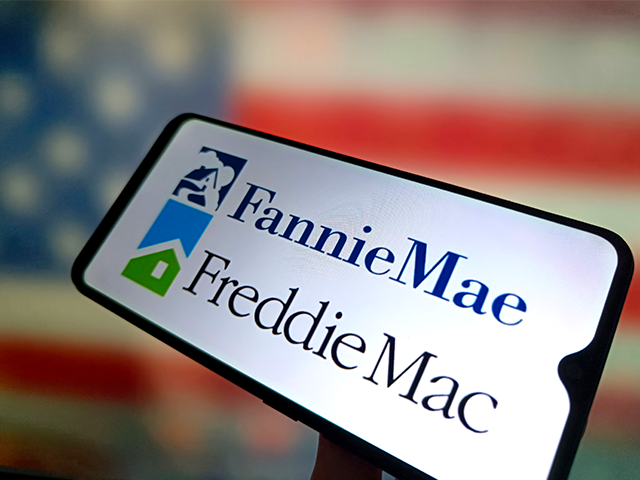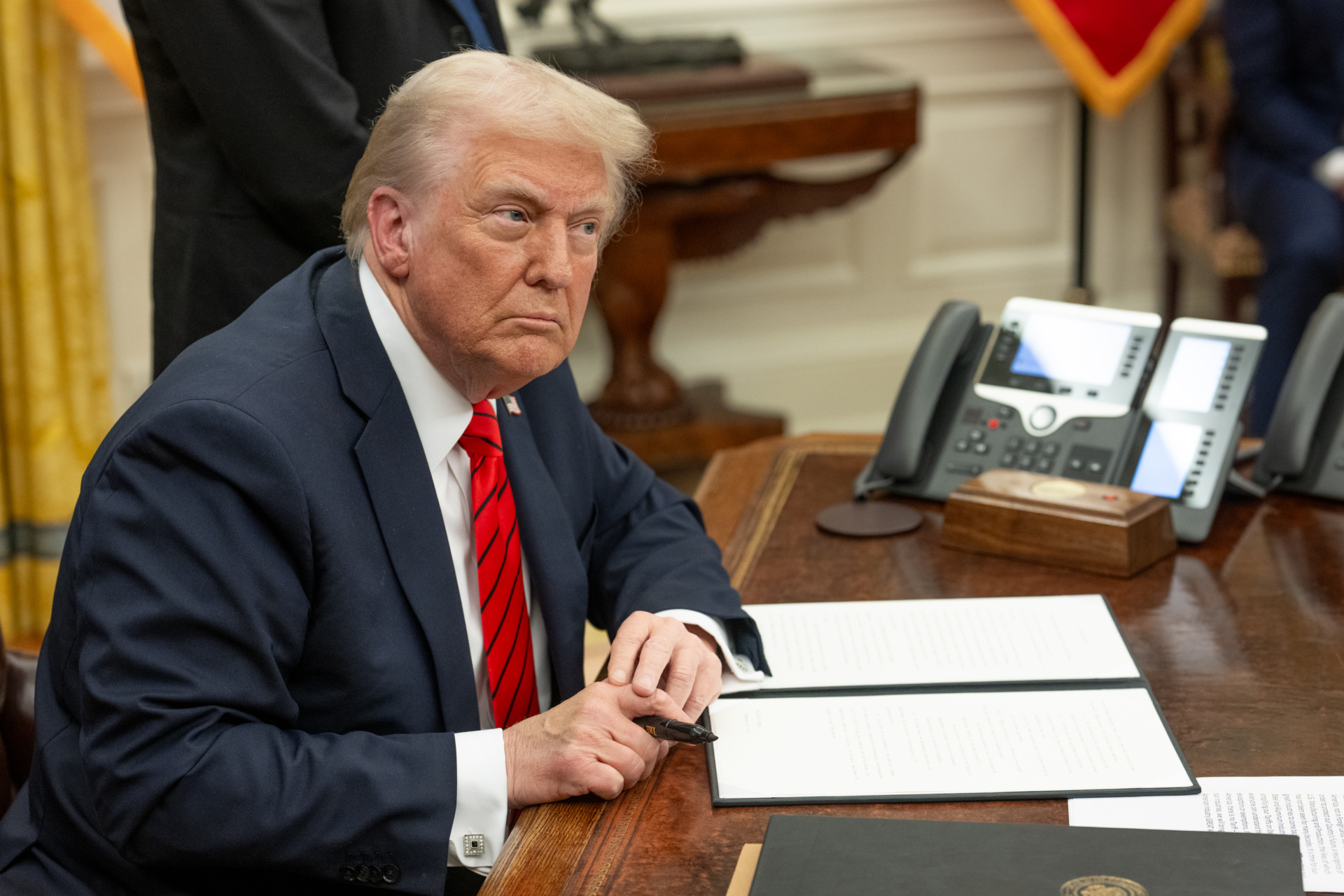Breitbart Business Digest: A Better Way to End the Bailout of Fannie and Freddie

Receivership Is the Way Out of Conservatorship for Fannie and Freddie
As the Trump administration looks to resolve the long-running conservatorship of Fannie Mae and Freddie Mac, three priorities have emerged.
First, the administration wants to take the companies public again.
Second, it wants to get a strong deal for taxpayers.
Third, officials have hinted they may keep the companies under oversight even after going public, at least for a transitional period. This is important because the Trump administration is serious about improving home affordability for young families and the American middle class. Any quick release that would threaten to raise mortgage costs is probably off-the-table.
In other words, the Trump administration has done something very Trumpian. It has sketched out a plan that looks nothing like any of the previous recapitalize-and-release proposals, highlighting that the potential range of outcomes is far wider than most analysts thought.
What would a plan look like that satisfies all three of President Trump’s aims?
Here’s one approach that hasn’t yet been formally proposed but would be consistent with both the legal framework established by Congress and the administration’s public statements: exit conservatorship through receivership, cancel the legacy capital structure, and restart the companies under new ownership — initially by the U.S. Treasury — with a long-term plan to sell shares gradually to the public.
This path would align with both market principles and taxpayer protection, while avoiding many of the complications that have plagued other reform efforts.
The Numbers That Shape the Debate
Bloomberg’s Matt Levine recently offered a useful breakdown of Fannie and Freddie’s current capital structure:
- Combined assets: $7.8 trillion
- Combined liabilities: $7.6 trillion
- Combined book equity: $160.7 billion
- Treasury’s senior preferred claim: $348.4 billion
- Other preferred stock: $33.2 billion
- Treasury also owns 79.9 percent of the common equity
If the companies were liquidated today, Treasury would take all remaining value. Other shareholders would receive nothing. And because the government’s claim increases each year by the full amount of retained earnings, private shareholders don’t get closer to seeing a return — they get further away.
Even with $30 billion in annual income, it would take more than a decade to pay down Treasury’s claim — and under current terms, it would never actually decline, because every dollar of net worth growth increases the senior preferred balance, as Levine points out.
This is a structure that produces neither a clean exit nor a fair return.
The “Grand IPO” Isn’t Plausible
Some reform plans imagine a massive capital raise to repay Treasury and recapitalize the government-sponsored enterprises (GSEs) in one step. But as Levine points out, the math doesn’t work.
To repay Treasury’s $348 billion and meet the Federal Housing Finance Agency’s capital requirements (about $194 billion), Fannie and Freddie would need to raise more than $540 billion in a combined public offering — more than all U.S. IPOs over the past decade combined.
That scale is simply not realistic. And even if it were, it would entail massive dilution of all existing shareholders — including the Treasury itself. In short, there’s no real path to privatization through a single mega-deal.
A modified version of this would have the Treasury simply deem the senior preferred shares as having been repaid, essentially canceling a $348 billion taxpayer asset. Under this scenario, the Treasury would erase the book-entry for the senior preferred and exercise its warrants for 79.9 percent of the common equity. They’d still need about $30 billion of preferred equity, but that would only take a year or so of retained earnings to build up.
This would make the holders of the legacy shares very happy because it would essentially transfer to them around 20 percent of the canceled taxpayer preferred stake. It would be an enormous windfall for shareholders, boosting the book value of shares to around $14 or $15, according to Levine’s calculation. That, in turn, could boost the market value of those shares to as much as twice that.
But it’s unclear that this is even legally possible. Can the U.S. Treasury simply declare it is surrendering a taxpayer asset of that size without any statutory authorization from Congress? Probably not. The Anti-Deficiency Act prohibits executive branch officials from spending or giving away federal resources without a congressional green light.
And then there’s the Constitution. In Article IV, Section 3, we read that “The Congress shall have Power to dispose of and make all needful Rules and Regulations respecting the Territory or other Property belonging to the United States; and nothing in this Constitution shall be so construed as to Prejudice any Claims of the United States, or of any particular State.” This likely gives Congress the exclusive authority to dispose of federal assets, including the senior preferred shares.
The political optics would also be awful. The biggest winners of this huge write-off of taxpayer assets would be billionaire hedge fund managers, some of whom may have supported Trump’s candidacy but are not particularly well-liked inside of the administration. Recall that Bill Ackman, one of the biggest holders of Fannie common shares, only came around to supporting Trump as a last resort, when his favored alternate Democrat candidate dropped out.
What’s more, giving away hundreds of billions of dollars of taxpayer value runs contrary to Trump’s reputation as a staunch defender of the interests of the American people. He was elected as the guy who would make us win so much we’d get tired of winning—not the guy handing out windfalls for billionaire financiers in New York City.

President Donald Trump signs executive orders on February 10, 2025, in the Oval Office. (Official White House photo by Daniel Torok)
The Legal Architecture Favors Receivership
Under the Housing and Economic Recovery Act of 2008 (HERA), the Federal Housing Finance Agency (FHFA) has two tools for managing distressed GSEs: Conservatorship, for temporary stabilization, and Receivership, for resolution.
Receivership is triggered when a GSE is undercapitalized and lacks a “reasonable prospect” of becoming adequately capitalized. That’s arguably the case now: by FHFA standards, Fannie and Freddie are still short by tens of billions of dollars, and the earnings sweep prevents them from building capital.
HERA does not explicitly provide a path out of conservatorship without resolution. But it does authorize FHFA to resolve an undercapitalized GSE, cancel the legacy capital structure, and transfer its business to a new entity. In fact, going from conservatorship to receivership is explicitly permitted by the statute and is consistent with how the government tends to resolve failed financial institutions.
That provides the legal mechanism for a restart — one that would begin not by wiping out taxpayers, but by preserving their ownership.
A Structured Exit That Works
Here’s how such an approach could work, if pursued:
- End the conservatorships through receivership
- Transfer the guarantee businesses, infrastructure, and operations to NewCo Fannie and Freddie
- Treasury receives 100 percent of the equity in the new companies
- The GSEs go public gradually, with Treasury selling shares over time
- Proceeds from share sales fund the Treasury and reflect the full value of the rescue
This resolves the companies’ status, creates clean capital structures, and gives markets a chance to invest without the overhang of litigation or complex shareholder claims.
Importantly, it also allows the Trump administration to say it kept the GSEs under federal oversight during the transition, aligning with recent public comments by FHFA Director William Pulte.
Rather than a single IPO, the public offering becomes a multi-year exit strategy, with Treasury retaining control and monetizing its stake based on market demand and company performance.
A Win for America, Not a Giveaway
This kind of reset would have clear advantages over simply canceling the senior preferred shares:
- It doesn’t sacrifice taxpayer value.
- It avoids handing windfalls to legacy investors.
- It keeps the companies operating without legal disruption.
- It allows capital markets to participate in an orderly, transparent way.
- It remains fully consistent with HERA, the legal foundation of the entire conservatorship.
- It’s not the only possible approach, but it may be the one that best balances the competing priorities now in play.
If the goal is to take the GSEs public, maintain federal control during a transition, and deliver real value to taxpayers, then a receivership-led reset followed by a gradual public offering may offer the most coherent path forward.
It’s grounded in the law. It’s compatible with the market. And it would allow the Trump administration to say — with reason — that it ended the bailout on the public’s terms, not those of a few ultra-wealthy financiers.